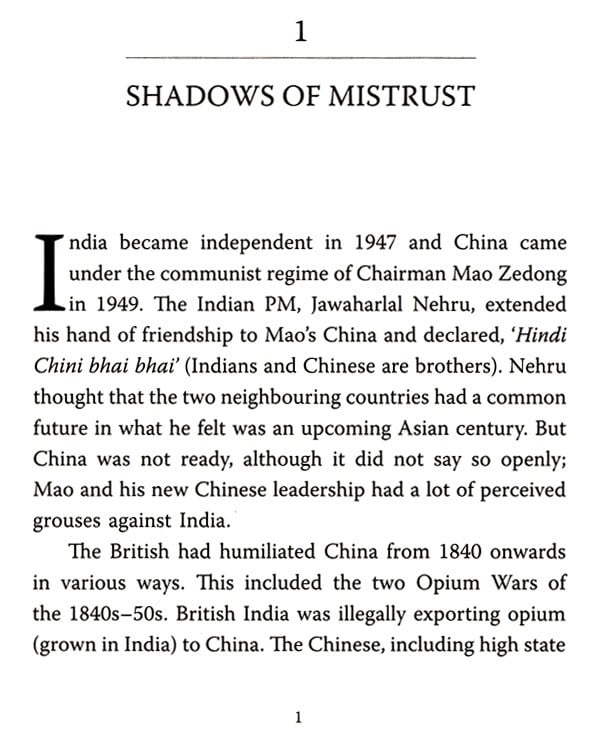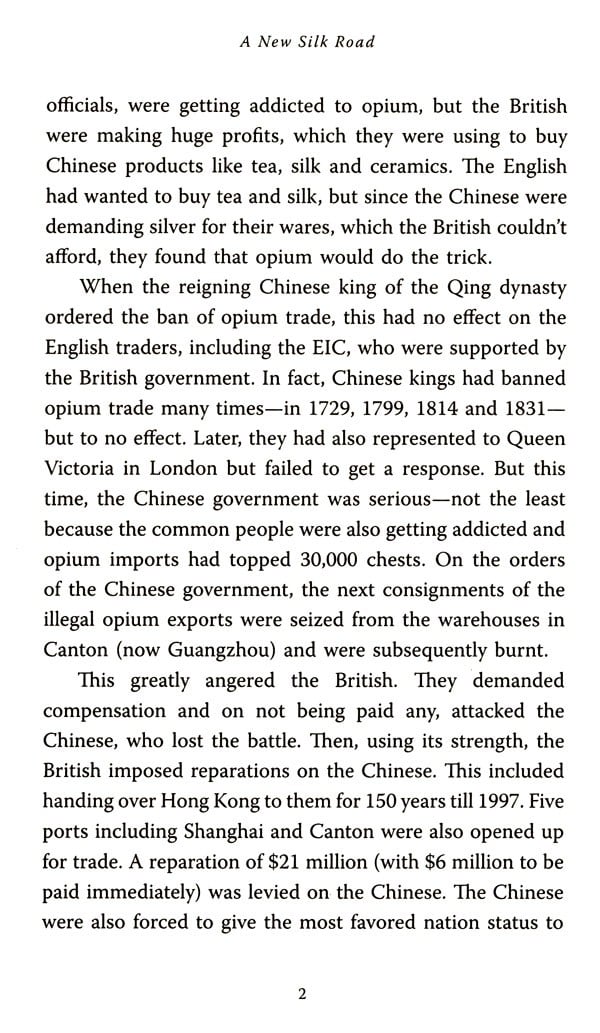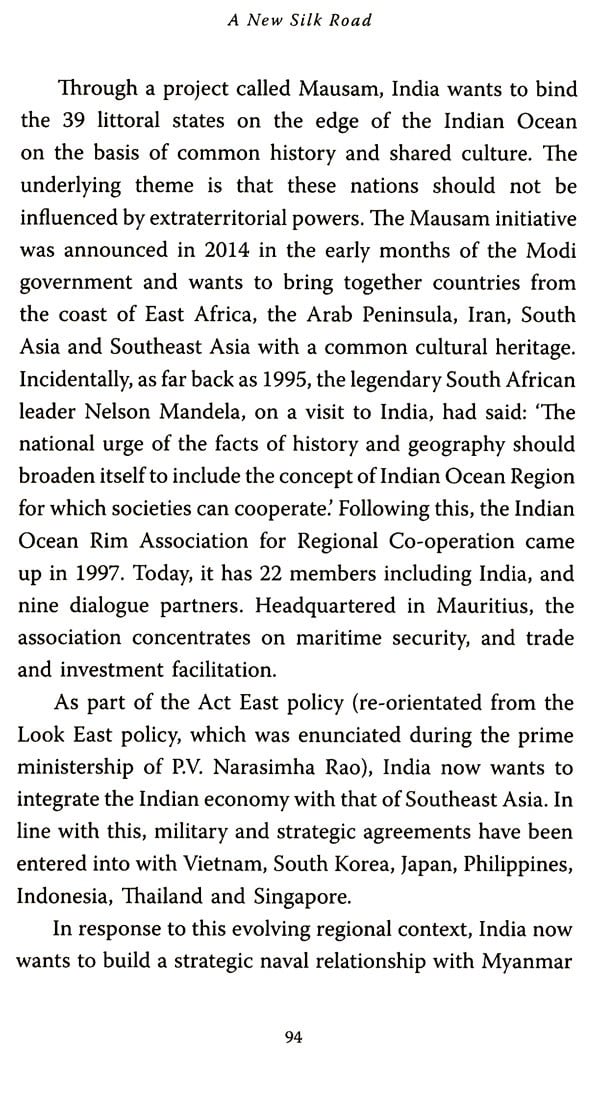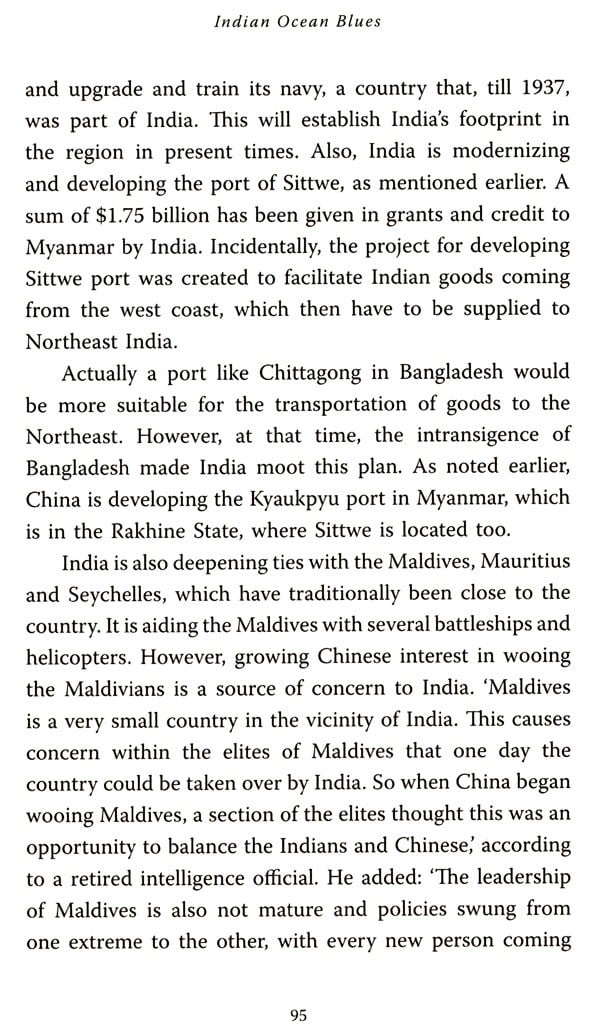
A New Silk Road (India, China and The Geopolitics of Asia)
Book Specification
| Item Code: | NBZ101 |
| Author: | Kingshuk Nag |
| Publisher: | Rupa Publication Pvt. Ltd. |
| Language: | ENGLISH |
| Edition: | 2021 |
| ISBN: | 9789390547586 |
| Pages: | 188 |
| Cover: | HARDCOVER |
| Other Details | 8.90 X 5.90 inch |
| Weight | 310 gm |
Book Description
In the summer of 2020, China, despite facing international condemnation for its response to the COVID-19 pandemic, entered into an eyeball-to-eyeball confrontation with India in the border areas of Ladakh. Though many analysts insist that the unprovoked Chinese action was aimed at deflecting attention from the pandemic, the real reason lies elsewhere—in President Xi's ambitious plans for his nation. It is to strengthen the China Pakistan Economic Corridor (CPEC) that leads from Gwadar port in Balochistan to China's Xinjiang province and passes through Pakistan Occupied Kashmir (PoK). This opens a new shortened path for Chinese exports and imports that otherwise would have to go through eastern China located far away. Ladakh allows relatively easy access to both PoK and Xinjiang; thus the Chinese seek to get a toehold in Ladakh.
Even as he re-examines outdated assumptions and makes path-breaking discoveries about China's new 'Great Game', Kingshulz Nag argues that it is imperative to understand history and learn from it to assess current events. A New Sill? Road offers deep, unknown insights into the political, economic, social and cultural factors underlying the current state of Sino-Indo relations. Nag insists that India and China are vastly different nations with very diverse political and economic strategies—something that Indians must understand in order to counter the Chinese conundrum.
Broad in sweep and range, A New Sill? Road is a must-read by anyone concerned with international affairs.
Kingshuk Nag is an author and journalist. Formerly the Resident Editor of The Times of India in Hyderabad and Ahmedabad, he is a prolific author and among other titles has written the biographies of Prime Minister Narendra Modi (The NaMo Story), Atal Bihari Vajpayee (A Man For All Seasons), Netaji Subhas Chandra Bose (Living Dangerously), Mohan Bhagwat (Influencer-in-Chief), the Bharatiya Janata Party (The Saffron Tide) and Vijay Mallya (Kingfizzer). Winner of the Prem Bhatia Award for excellence in political analyses and reporting, Nag is an alumnus of the Delhi School of Economics.
China Plays the Great Game
Have you heard about Zorawar Singh Kahluria? Hailed as the Napoleon of India, he was a general in the army of the Dogra dynasty of Jammu, a vassal of the Sikh empire that ruled a major part of north Kashmir in the first half of the nineteenth century. The governor of Kishtwar, Kahluria extended his territories to include Ladakh and Baltistan. But still he had an impossible dream—that of conquering Tibet.
His purpose was the control of the lucrative trade of pashmina wool, which emanated in Tibet and went through Ladakh, down to Afghanistan. Kahluria, a fiercely independent man loyal to the Dogras, first conquered Ladakh in an ambitious military campaign. From there, he attacked Tibet in the first subcontinental raid of what is now China. Assisting him on this raid were the Dogras, the Baltis (from Baltistan), those who lived in Jammu, the Kishwars and the Ladakhis. Kahluria's 6,000-strong army moved in three columns parallel to each other and reached Tibet in May 1841. They passed the Manasarovar Lake and reached Gartok, taking control of all the Tibetan towns in the region by the beginning of September. With no Tibetans around, a relaxed Kahluria also went for a pilgrimage to Mount Kailash. Meanwhile, the British pressurized him to call off the raid, as they wanted control of the pashmina wool trade. They moved the Sikh emperor in Lahore but the message from the emperor went down the communication channels and by the time it reached Kahluria, he could afford to ignore it.
By December, the Qing dynasty (which ruled over China and controlled Tibet) returned to battle Kahluria's army. Unfortunately, he was killed by a spear to his chest, and without a leader to guide them, his men ran away for cover. The Tibetan-Chinese forces, in a show of energy, pushed back all the way to Ladakh. However, here they were beaten hollow and the Chinese commander was beheaded by the Dogras as revenge for the fate that befell Kahluria.
Now, the Chinese were in a corner. They sued for peace and the Treaty of Chushul was signed on 16 September 1842. Incidentally at this time, the Chinese were also signing up the British in a deal after the first Opium War on the other side of their country.
**Contents and Sample Pages**












